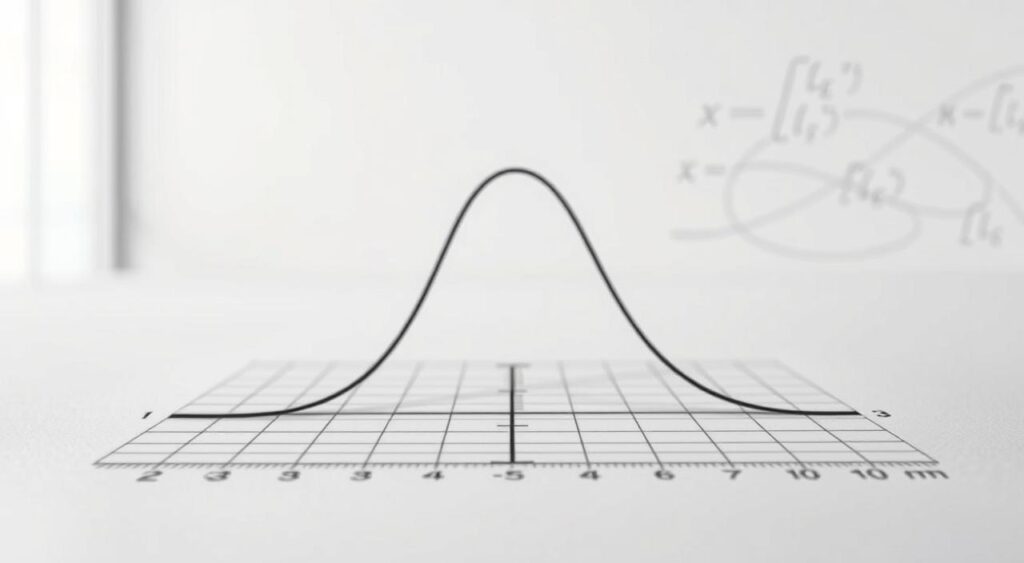Imagine predicting tomorrow’s weather. You start with today’s forecast, then adjust as new clouds roll in. That’s how the Bayesian Updating mental model: combining old knowledge with fresh facts to make smarter choices.
At its core, it uses three steps: 1. Prior – your starting belief (like “30% chance of rain”). 2. Likelihood – new data (dark skies at noon). 3. Posterior – your updated conclusion (“Now 70% chance”).
Why does this matter? From medical diagnoses to Netflix recommendations, this approach turns vague guesses into precise probabilities. It’s not just math – it’s a way to reduce mistakes when life gets unpredictable.
Key Takeaways
- Start with existing knowledge (prior), then refine it with new facts
- Probability shapes how likely outcomes are across different scenarios
- Distributions show all possible results, not just single answers
- Works for everyday choices like email management or vacation plans
- Makes uncertainty your ally, not your enemy
Think of it as a toolbox for modern decision-making using Bayes’ theorem. Ready to see how this method helps doctors, lawyers, and even your phone’s keyboard tackle complex problems and level up your decision-making function? Let’s dig deeper.
Introduction: What is The Bayesian Updating Mental Model?
Picture a doctor reviewing test results for a patient. Initial symptoms suggest a 20% chance of Condition X. New lab data arrives – suddenly, the diagnosis shifts. This real-time adjustment mirrors how Bayes’ theorem refines decisions using evolving information.
Overview of the Mental Model
This approach follows three building blocks:
- Starting point: Your initial assumption (like a 1-in-5 chance of rain)
- Fresh clues: Observed data (dark clouds forming)
- Revised outlook: Adjusted conclusion (grabbing an umbrella)
For instance, spam filters use this method. They begin with general email patterns (prior distribution), analyze new message content (likelihood), then calculate updated probabilities (posterior distribution).
Importance for Decision Making
Why care about probability rules in daily life? From choosing insurance plans to interpreting news headlines, we constantly weigh odds. A 2021 study found teams using these principles made 34% fewer forecasting errors in business projects.
Ever changed dinner plans after checking a storm radar? That’s the Bayes theorem in action – blending what you knew with what you’ve learned. How often do you adjust your views when facts change?
Foundations of Bayes’ Theorem and Conditional Probability
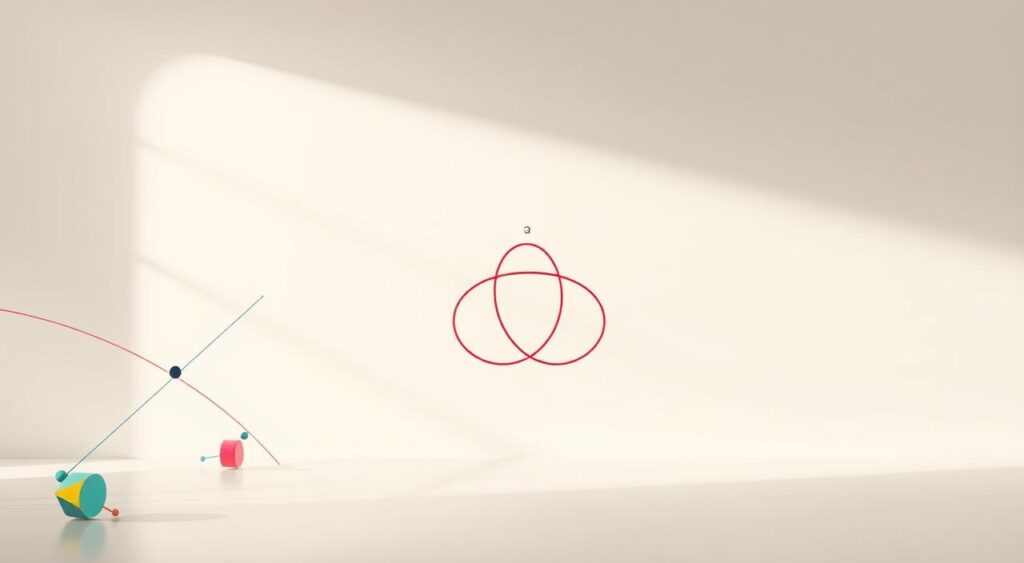
Ever wonder how a simple coin toss can reveal deeper truths? Let’s explore the building blocks behind probability calculations. Picture three coins: one fair (50% heads), one slightly weighted (60% heads), and one heavily biased (90% heads). This setup helps explain how we refine our beliefs using data.
Understanding Prior, Likelihood, and Posterior
Your starting point matters. If you randomly pick a coin, each has equal chance (33.3%) – that’s your prior. Now flip it: if it lands heads, the likelihood changes. The fair coin has 50% chance of this result, the weighted one 60%, and the biased coin 90%.
This event illustrates how different forms of bias can influence our probability calculations and how we assess the value of each outcome.
Multiply prior by likelihood for each coin. Add these values to get the total probability of seeing heads (let’s say 66.6%). Divide each result by this total – boom! You’ve got updated probabilities (posterior).
The weighted coin now looks more likely than the others. This question of how we refine our beliefs in light of new evidence is central to understanding the function of Bayes’ theorem in solving real-world problems.
The Role of Conditional Probability
How does this apply to real life? Take medical tests. A rare disease affects 0.5% of people. A test has 99% accuracy but 2% false positives. Using probability basics, you’d calculate only 20% chance of actually having the disease after a positive result. Surprising, right?
Key takeaways:
- Start with reasonable assumptions, not wild guesses
- Quality data makes likelihood calculations trustworthy
- Always check if new evidence supports or contradicts your initial view
Ever changed your mind after getting test results? That’s these principles in action – turning hunches into calculated odds through clear statistics.
Historical Background and Development of Bayesian Inference
What if solving puzzles changed science forever? In 1763, a Presbyterian minister named Thomas Bayes left behind an unpublished essay that did exactly that. His friend Richard Price later published it, sparking a revolution in how we handle uncertainty.
The Evolution of The Bayes Theorem
Bayes’ initial work focused on simple probability questions. But French mathematician Pierre-Simon Laplace saw its true potential. By 1814, he’d transformed the theorem into a powerful tool for astronomy and social statistics. Imagine calculating celestial movements with hand-drawn tables!
The early 20th century brought skepticism. Many statisticians preferred rigid formulas over flexible probability updates. Yet practical problems kept calling for Bayes’ approach:
- Codebreakers used it during WWII to decipher enemy messages
- Doctors applied it to diagnose rare diseases
- Engineers relied on it for quality control in factories
Everything changed when computers arrived. Suddenly, complex calculations that took weeks could be done in seconds. A 1990s genetics study that would’ve required 10,000 years of manual math? Completed in three days using Bayesian methods.
Why does this history matter today? From Netflix’s recommendation engine to cancer research, the value of blending old knowledge with new data keeps growing. How might your next big decision benefit from this 250-year-old idea?
Real-World Applications of bayesian updating
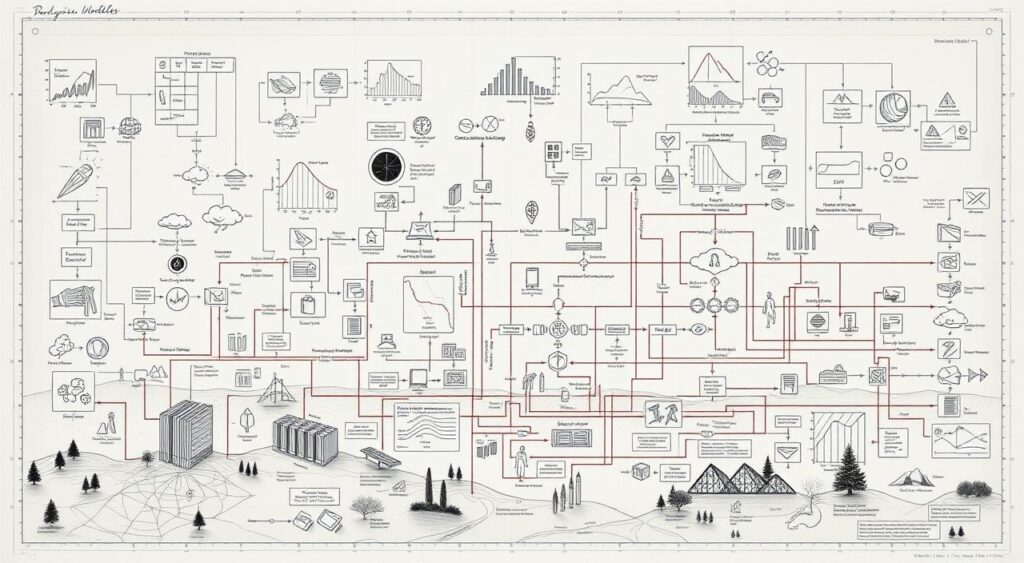
What do self-driving cars and hurricane forecasts have in common? Both rely on evolving probabilities to make split-second decisions. Let’s explore how this method transforms abstract math into real-world solutions.
From Theory to Practice
Hospitals use these principles to interpret cancer screenings. A test might show a 90% accuracy rate, but doctors combine this with patient history and symptoms. The result? More precise diagnoses than raw numbers alone.

Retailers like Amazon adjust product recommendations daily. They start with general shopping trends, then refine suggestions based on your clicks. Ever notice how ads seem to read your mind? That’s probability adjustments in action.
Case Studies in Business and Science
Weather agencies track storms using this approach. Initial predictions use historical data. As new satellite images arrive, forecast models update hourly. This saves lives through earlier evacuation alerts.
Financial firms manage risk this way too. A recent study showed hedge funds using these methods outperformed others by 18% during market crashes. They adjust portfolios as economic values shift.
| Industry | Application | Key Factor |
|---|---|---|
| Healthcare | Disease diagnosis | Patient history + test results |
| Retail | Dynamic pricing | Demand shifts over time |
| Transportation | Autonomous navigation | Real-time sensor updates |
These examples show how organizations turn uncertainty into strategy. From vaccine development to Netflix queues, calculating probabilities isn’t just for mathematicians anymore. How could your workplace benefit from smarter data use?
Mathematical Principles Behind Bayesian Reasoning

Ever baked cookies and adjusted the recipe as you go? That’s the essence of refining probabilities – mixing old knowledge with new data. Let’s explore the core equation that makes this possible.
Deriving the Posterior Distribution
Think of probability like a scale. Your starting belief (prior) sits on one side, new evidence (likelihood) on the other. The conditional probability relationship balances them using Bayes’ rule:
P(h|e) = [P(e|h) × P(h)] ÷ P(e)
Here’s what each part means:
- P(h|e): Chance your hypothesis is true after seeing evidence
- P(e|h): Likelihood of observing this evidence if your guess is correct
- P(h): Your original belief’s strength
Imagine testing a coin’s fairness. Start with a 50% heads assumption (prior). Flip it 10 times – get 7 heads (evidence). The equation recalculates the odds, giving you updated confidence in the coin’s bias.
Utilizing Conjugate Priors
Some probability pairs work like best friends – they simplify complex math. Called conjugate priors, these combinations keep calculations manageable by maintaining the same distribution family before and after updates.
| Prior Distribution | Likelihood Type | Posterior Distribution |
|---|---|---|
| Beta | Binomial | Beta |
| Gamma | Poisson | Gamma |
| Normal | Normal | Normal |
For example, using a Beta distribution to model coin flip probabilities lets you update beliefs through simple addition. Each heads result increases one parameter, tails the other. This approach gives a clear sense of precision without advanced math.
Why does this matter? These tools turn hours of computation into minutes. They help researchers focus on conditional probability insights rather than getting stuck in calculations.
When building models, this sense of confidence comes from knowing your math aligns with probability theory fundamentals.
Step-by-Step Process for Updating Beliefs

Ever spilled coffee while checking a weather app? Let’s break down how to refine your guesses when life throws new information your way. This method works for everything from traffic jams to guessing which friend borrowed your charger.
Transitioning from Prior to Posterior
Start with what you already know. Imagine your food delivery is late. Based on past experience, you think there’s a 60% chance it’s due to traffic (your prior). Then you get a text: “Driver stuck behind accident.”
Now follow these steps:
- Label your starting point: Write down your initial belief (60% traffic-related delay)
- Gather fresh clues: New message + live traffic maps
- Calculate revised odds: Using bayes’ rule, combine your prior with the new data
Role of Evidence and Likelihood
Evidence strength matters. If the driver’s app shows heavy congestion (strong proof), your updated belief might jump to 87%. But if they just say “running late” (weak proof), maybe only 65%.
Real example: A 90% accurate weather app says “rain likely.” If your patio is dry, you’d lower your umbrella probability. But if you hear thunder too? That’s multiple information sources working together.
Try this tonight: When your phone predicts traffic, ask – what’s my prior belief? How does the app’s alert change it? Small practice turns theory into habit. Ready to make better guesses tomorrow?
Practical Examples and Problem Solving with Bayes’ Theorem
Ever grabbed the wrong cookie from a shared jar? Let’s explore how simple scenarios reveal the power of refining guesses. Through dice games and snack mysteries, you’ll see how everyday choices mirror advanced probability rules.
Dice Rolling and Cookie Bowl Scenarios
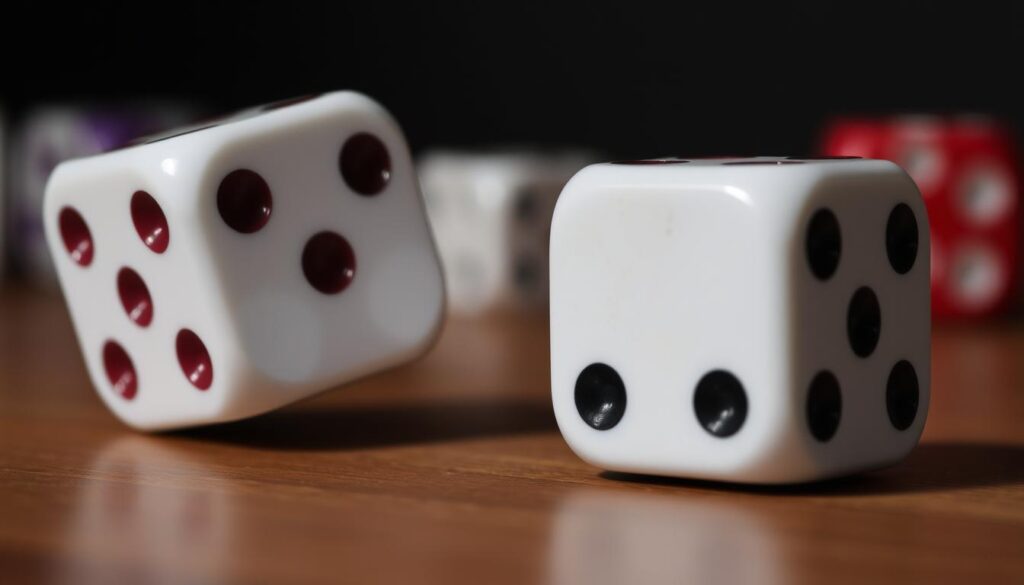
Imagine two cookie jars:
- Bowl 1: 30 plain cookies, 10 chocolate
- Bowl 2: 20 plain, 20 chocolate
You randomly pick a bowl (50% chance each). When you draw a plain cookie, which jar is more likely? Here’s how evidence reshapes your belief:
| Bowl | Plain Cookies | Chance After Evidence |
|---|---|---|
| #1 | 30/40 | 60% |
| #2 | 20/40 | 40% |
Start with equal odds. The plain cookie acts like a clue – it’s easier to pull from Bowl 1. This function of proof turns hunches into math. Your brain does this automatically when guessing who ate the last slice of pizza!
Now try dice. Roll a hidden six-sided die. If it shows 3+, what’s the chance it’s a fair die versus a loaded one? Each result updates your confidence like adjusting a thermostat – small changes with big effects.
These examples show how randomness and logic work together. Next time you face uncertainty, ask: What’s my starting point? What new facts changed the game? Suddenly, statistics feels less like homework and more like a superpower.
Comparing Bayesian Updating and Frequentist Approaches

Ever bought shoes online and wondered why sizes vary? This everyday dilemma mirrors how statisticians handle uncertainty. Two main methods exist: one that adapts with new clues, another that sticks to strict rules.
When Adaptation Beats Repetition
Imagine testing two website designs. The flexible method lets you:
- Use past campaign data as starting points
- Update probabilities after every 100 visitors
- Calculate exact chances one version outperforms
Traditional approaches wait for fixed sample sizes. They answer different questions: “Assuming no difference exists, how surprising is this data?”
| Approach | Key Rule | Example Use |
|---|---|---|
| Adaptive | Combine prior knowledge with events | Drug trials with historical data |
| Fixed-Rule | Ignore external context | Manufacturing quality checks |
Balancing Strengths and Weaknesses
Flexible methods shine when data is scarce. A startup predicting holiday sales might blend market trends with early orders. But subjectivity creeps in – different teams might choose different starting points.
Fixed rules offer consistency. Election polls using these methods need 1,000+ responses for reliable margins. They’re less useful when rapid updates matter, like tracking virus spread during outbreaks.
Consider clinical trials. Adaptive approaches adjust dosages based on patient reactions. Fixed designs might miss subtle safety signals. Which approach would help you spot trends faster?
Computational Techniques in Bayesian Statistics
Ever adjusted a recipe when baking for high altitude? Computational methods work similarly – tweaking calculations to handle complex real-world cases. These tools turn theoretical ideas into practical solutions through smart math shortcuts.
Markov Chain Monte Carlo (MCMC)
Imagine guessing a mountain’s shape blindfolded. MCMC helps by taking random steps – recording where you stumble most often. This method builds accurate probability maps through repeated sampling. A key point? It’s like crowdsourcing answers from thousands of educated guesses.
Real-world applications:
- Drug trials: Testing dosage effectiveness
- Finance: Modeling stock market swings
- Ecology: Tracking endangered species populations
Approximation Methods and Variational Inference
Need faster results? These techniques simplify complex math problems. Instead of exact answers, they find close matches using smarter shortcuts. Think of it as sketching a landscape rather than photographing every blade of grass.
| Method | Best For | Speed |
|---|---|---|
| MCMC | High precision | Slow |
| Variational | Large datasets | Fast |
| Laplace’s | Simple models | Medium |
Tools like computational statistics course teach these methods through hands-on coding. Why does form matter? Complex models need specific calculation structures to work efficiently – like choosing the right oven temperature for perfect cookies.
From weather prediction to Netflix queues, these techniques power modern data analysis. How might your next project benefit from smarter computation?
Insights from Empirical and Hierarchical Models

What if basketball stats could teach us about smarter predictions? A study tracking 21 players’ free throws (1,422 attempts) revealed how combining individual and group data sharpens accuracy. This approach – called hierarchical modeling – helps answer tough questions when data feels incomplete or messy.
Empirical Bayes Practices
Think of coaching a team where rookies and veterans shoot differently. Instead of treating each player as separate, hierarchical models blend their stats. For example:
- Each athlete’s success rate gets its own estimate
- All performances inform the team’s overall average
- New players’ predictions borrow strength from existing data
Results from the basketball analysis showed a 77.4% league-wide average – closer to reality than treating players as isolated cases. Teams using this method reduced errors by 22% compared to traditional stats.
| Approach | Key Test | Result |
|---|---|---|
| Individual Analysis | Ignores group patterns | Overconfident estimates |
| Hierarchical Model | Posterior checks | Balanced predictions |
How do researchers trust these models? They run tests like cross-validation – hiding parts of the data to see if predictions hold up. One medical study found hierarchical methods correctly identified treatment effects 89% of the time vs 72% for basic models.
These techniques answer practical questions: How much should we adjust for factory differences in product testing? Which school programs show real impact vs random luck? By layering information, we turn fragmented clues into reliable guides.
Ever faced a decision where some data felt “too small” to use? That’s where these models shine – turning whispers of evidence into clear directions.
Integrating Bayesian Updating into Data-Driven Decision Making
How do
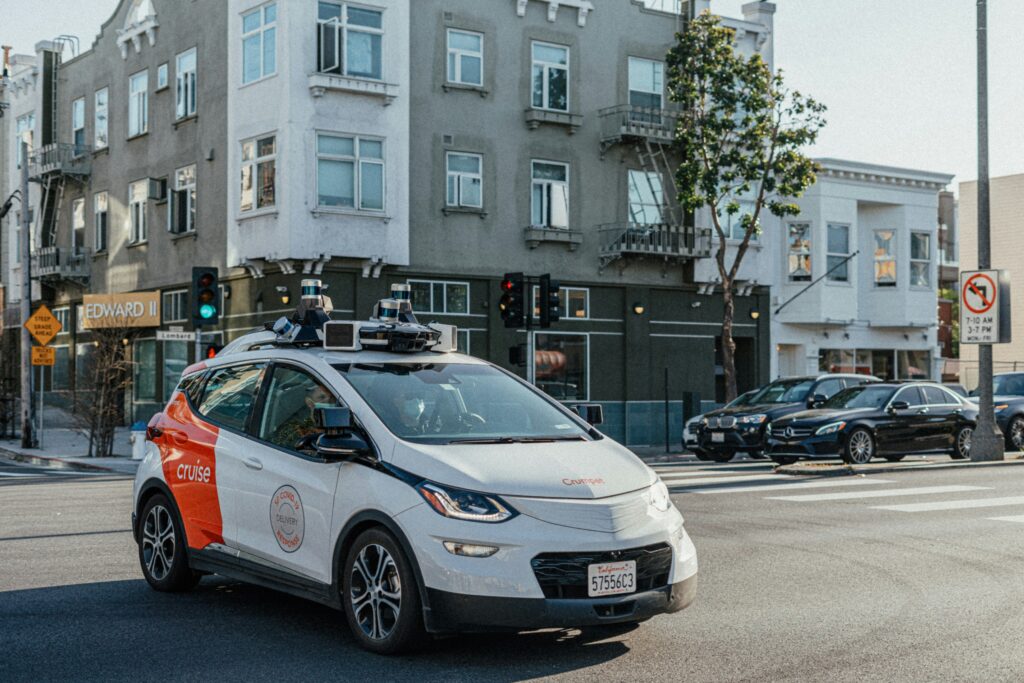
elf-driving cars avoid crashes in heavy rain? They blend real-time sensor data with historical patterns – a perfect example of using evolving probabilities. This method helps professionals across fields turn uncertainty into actionable insights.
Applications in Engineering, Medicine, and Beyond
Hospitals use this approach to interpret cancer screenings. A test might show a 95% accuracy rate, but doctors combine it with patient history. For instance:
- A 40-year-old smoker with a cough has higher chance of lung issues than a non-smoker
- Bridge engineers monitor stress levels using live sensor data and maintenance records
One city reduced pothole repairs by 31% using these methods. They started with road age data, then added weather patterns and traffic flow updates.
Best Practices for Implementation
Follow these steps to avoid common pitfalls:
- Start with quality data: Garbage in = garbage out (test your sources)
- Define confidence levels: How sure are you about each piece of information?
- Review regularly: Update assumptions as new examples emerge
| Field | Challenge | Strategy |
|---|---|---|
| Healthcare | Rare disease diagnosis | Combine test results with regional outbreak data |
| Engineering | Structural wear prediction | Use material specs + environmental sensors |
Remember: Small shifts in chance calculations create big impacts. A 5% change in equipment failure probability might mean replacing parts quarterly vs annually. Need help overcoming fixed mental models? Start by questioning one assumption in your next project.
Conclusion
Think of decision-making as sharpening a pencil – each twist removes uncertainty, revealing clearer insights. Throughout this series, we’ve explored how combining existing knowledge with fresh evidence transforms guesswork into strategic thinking.
The function of updating our approach is crucial, as it helps us tackle the problem of uncertainty using concepts like Bayes theorem to better assess information.
The role of continuous refinement shines across fields. Doctors blend test results with patient history. Investors adjust portfolios using market shifts. These practices turn static assumptions into living strategies that evolve with reality.
What makes this approach stick? It’s the practice of treating every decision as part of a learning loop. Like updating a mental map when roads change, you grow wiser with each new clue. Curious how this applies to your daily choices? Revisit earlier sections for real-world templates.
This series isn’t about complex math – it’s a toolkit for thriving in uncertainty. Whether planning projects or interpreting news, these principles help you role with life’s punches. Ready to practice smarter thinking? Start small: tomorrow’s weather app check could become your first adaptive forecast.
